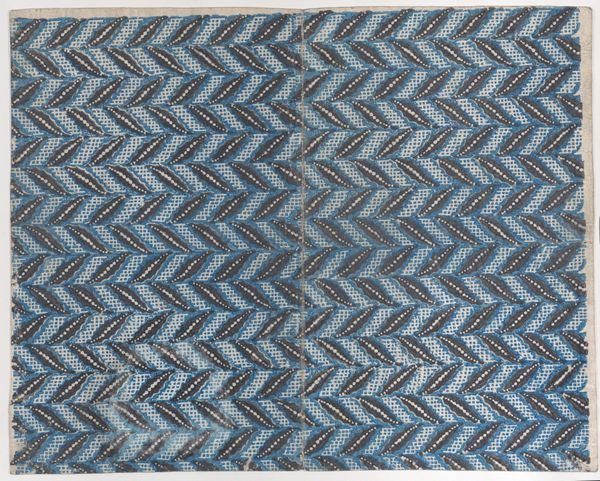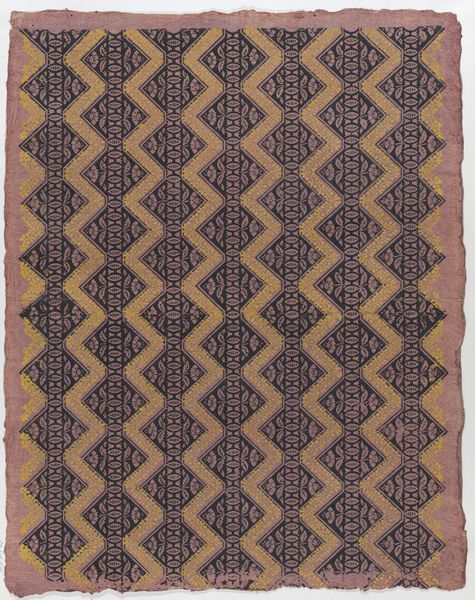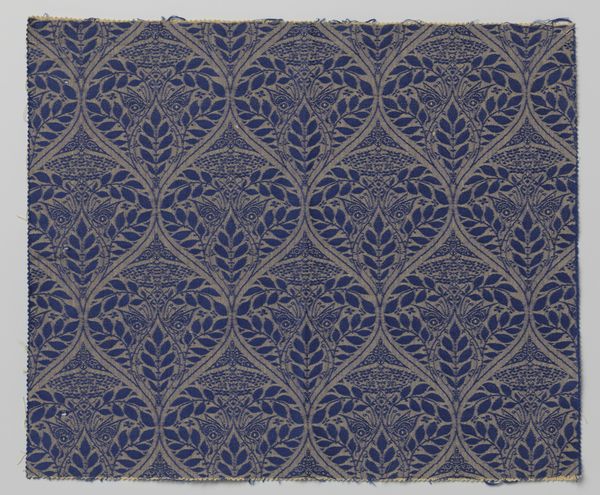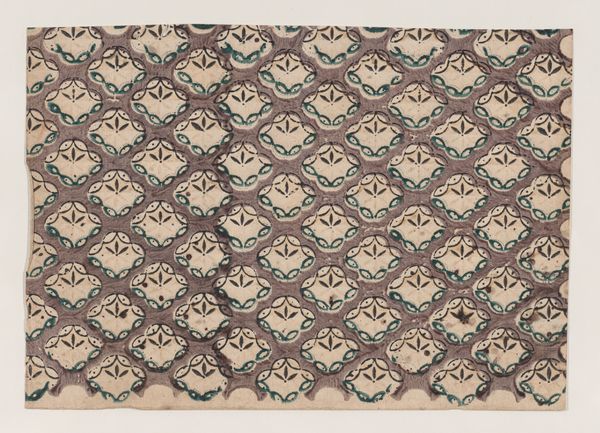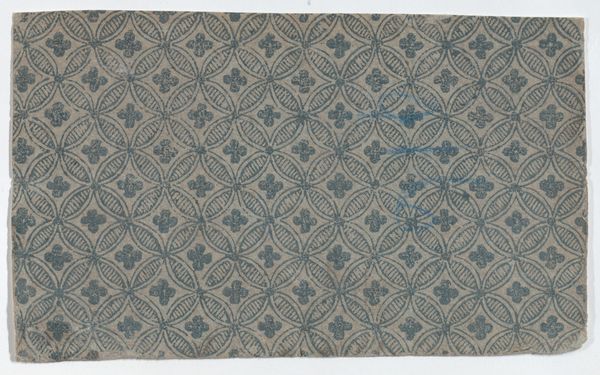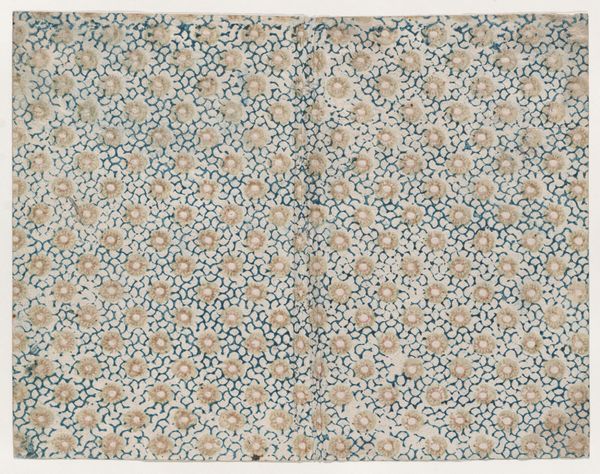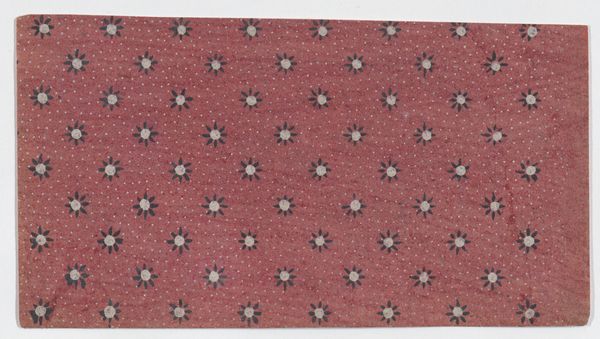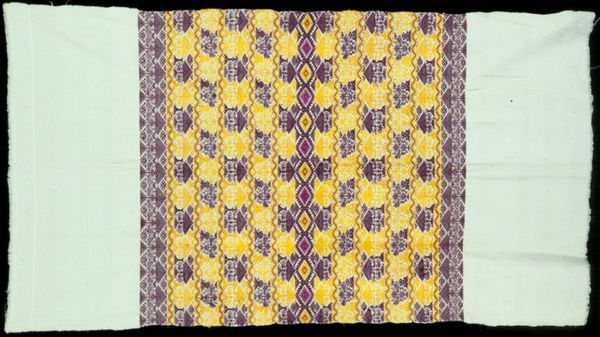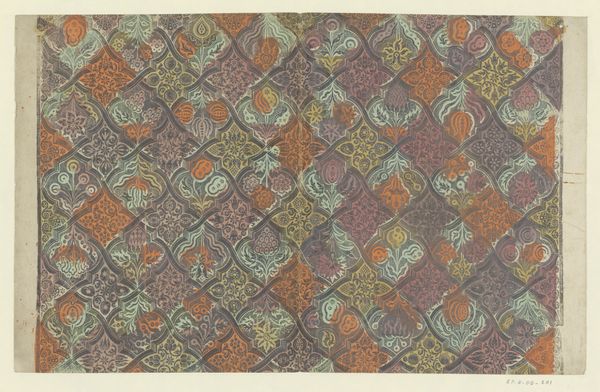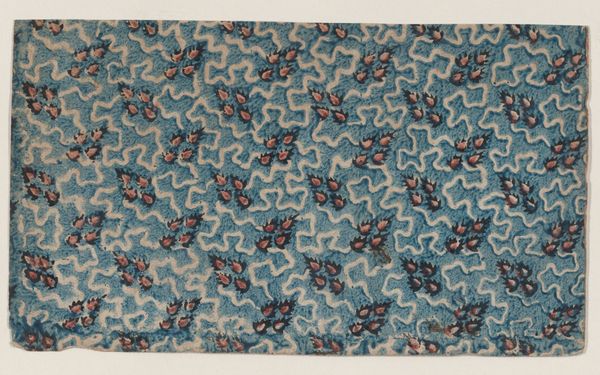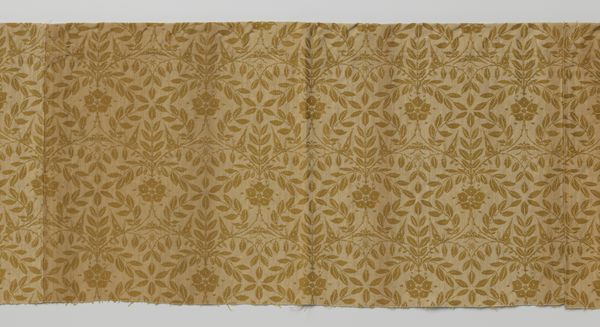
drawing, print, weaving, textile
#
drawing
# print
#
pattern
#
weaving
#
textile
#
pattern repetition
#
textile design
#
decorative-art
#
imprinted textile
Dimensions: Sheet: 8 1/16 × 12 3/16 in. (20.5 × 30.9 cm)
Copyright: Public Domain
Editor: Here we have an anonymous textile from the 19th century, titled "Book Cover with Overall Floral Design", currently held at the Metropolitan Museum of Art. The floral and leaf patterns are simple, almost like stencils. What’s your take on the symbolism here? Curator: It speaks volumes. This isn't merely decorative; it's a language. The repetition of flowers and leaves – what could that convey about the intended reader? Perhaps ideas around growth, cultivation of knowledge, or even a subtle reference to the cyclical nature of life and learning. Editor: Cyclical nature of learning… That’s insightful! So the imagery might be less about beauty and more about embedded meaning. Curator: Precisely. Floral motifs were rarely arbitrary. They served as carriers of coded messages. Consider which flowers are chosen – their common associations at the time. Is there a particular arrangement, a color choice, or juxtaposition that amplifies meaning? The designer used these symbols to subtly underscore the book's message and engage the reader on a deeper, subconscious level. Editor: That's fascinating. I hadn't thought about it as actively communicating. I see so much pattern repetition now, but I missed those hidden meanings. Curator: Consider how patterns themselves serve as potent reminders, designed to gently reinforce established beliefs, and to keep them at the forefront of awareness through frequent visual prompts. Editor: I will definitely start thinking about pattern differently. Thanks. Curator: And I trust it opens further pathways into interpreting cultural memory.
Comments
No comments
Be the first to comment and join the conversation on the ultimate creative platform.
